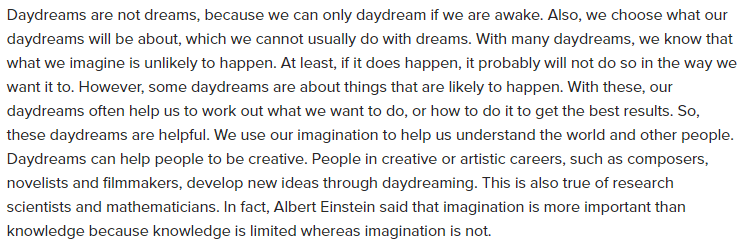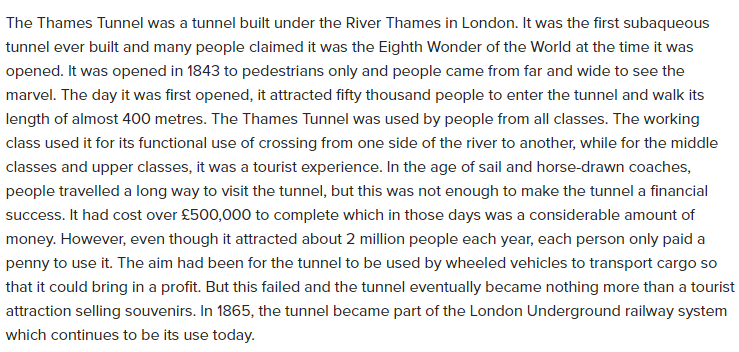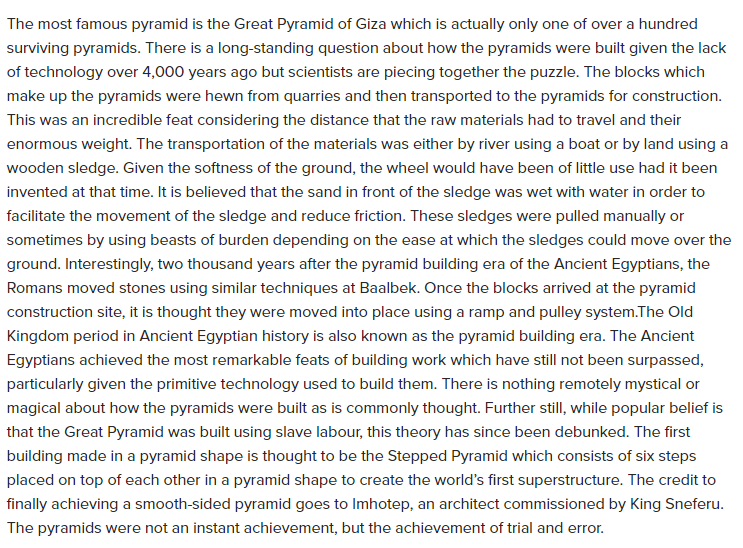IELTS Reading True False Not Given: Strategies, Tips, Exercises & Practice PDF
9 min read
Updated On
-
Copy link
IELTS Reading True False Not Given questions can be challenging to IELTS candidates. Master these IELTS question types with our expert tips and practice tests and take away a free IELTS Reading True False Not Given practice PDF for future preparation!
Table of Contents
- What is IELTS Reading True False Not Given?
- Strategies to Solve IELTS Reading True False Not Given Questions
- Tips to Solve IELTS Reading True False Not Given
- Common Mistakes to Avoid in IELTS Reading True, False, Not Given
- Practice Test on IELTS Reading True False Not Given
- IELTS Reading True False Not Given Exercises PDF

Limited-Time Offer : Access a FREE 10-Day IELTS Study Plan!
IELTS Reading True, False, Not Given questions are a common type of question in both IELTS Academic Reading and in the IELTS General Reading exam. It requires you to determine whether a statement agrees with, contradicts, or is not mentioned in the given passage.
This article helps you to understand how to answer the True False Not Given IELTS reading questions with expert tips and provides exercises for practice. Moreover, get the latest IELTS Reading True False Not given exercises PDF for FREE to boost your IELTS Reading preparation!
What is IELTS Reading True False Not Given?
IELTS Reading True, False, Not Given questions assess your ability to understand factual information in the passage. You will be given a series of statements, and you must decide if they are:
- TRUE – The statement agrees with the information in the passage.
- FALSE – The statement contradicts the information in the passage.
- NOT GIVEN – The information is not mentioned in the passage.
They might have a similar pattern to IELTS Reading Yes, No, Not Givenquestions, but differ on the basis of the information given in the passage. While True/False/Not assesses the text based on factual information about a topic, Yes/No/Not Given evaluates the text based on the opinions, views or beliefs of the writer or other people who are mentioned.
Check out the video below to learn about IELTS Reading True/False/Not Given within a few minutes!
Strategies to Solve IELTS Reading True False Not Given Questions
Now it is time to learn the strategies to solve the IELTS Reading True False Not Given questions in just six steps. They will not only help in handling these question types, reducing the fear but also help in time management in IELTS Reading.
-
Step 1: Read the Instructions Carefully
It is important to read the instructions thoroughly to know whether it is Yes, No, Not Given questions or True, False, Not Given ones (for opinions rather than facts). Make sure you follow the correct format.
-
Step 2: Locate the Key Information
Scan the passage to find the relevant section related to the statement. Look for keywords and their synonyms instead of exact word matches using the IELTS Reading keyword techniques.
-
Step 3: Pay Attention to Modifiers
Words like all, always, never, only, best, some, may, could can change the meaning of a sentence. Be careful with these words.
Example: Some students find reading difficult.
"All students find reading difficult." → FALSE
"Reading is difficult for some students." → TRUE
-
Step 4: Be Careful of Paraphrasing
IELTS passages often paraphrase information, so focus on the meaning rather than the exact words. So, improving your IELTS Vocabulary during preparation is also important to know the synonyms or paraphrases.
Example:
Statement: Scientists discovered that exercise helps in reducing stress.
Question: Research has proven that working out relieves anxiety.
Answer: TRUE (Synonyms: "scientists" = "research," "exercise" = "working out," "reducing stress" = "relieves anxiety")
-
Step 5: Do Not Assume Information
Base your answer only on the passage. If a statement sounds logical but isn’t mentioned in the text, the answer is Not Given.
Example:
Statement: The Amazon rainforest contains thousands of plant species.
Question: The Amazon rainforest has the highest number of plant species in the world.
Answer: NOT GIVEN (The passage mentions many plant species but does not compare it with other forests.)
-
Step 6: Distinguish Between "False" and "Not Given"
Many test-takers confuse False and Not Given. Remember:
- False → The passage contradicts the statement.
- Not Given → The passage does not provide any information about the statement.
Example:
Statement: The Eiffel Tower was completed in 1889.
The Eiffel Tower was built in 1900. → FALSE (Contradicts the passage.)
The Eiffel Tower was designed by a French architect. → NOT GIVEN (The passage does not mention the designer.)
Tips to Solve IELTS Reading True False Not Given
Look at some of the top IELTS Reading tips and techniquesthat are much needed to solve the questions on IELTS Reading True False Not Given topics.
- Follow the Question Order – The answers in the passage appear in the same order as the statements in the question. This means you don’t need to read the entire passage first. Instead, work through the questions one by one and locate the relevant part of the text.
- Ensure You Have All Three Answer Types – The test always includes at least one of each answer type: True, False, and Not Given. If, after answering all the questions, you are missing one category, you’ve likely made a mistake—double-check your answers.
- Base Your Answer Only on the Passage – IELTS does not test your general knowledge. Even if you know a fact to be true, but the passage does not mention it, the correct answer is Not Given. Always rely solely on the information in the passage.
- Avoid Overthinking – If you cannot find clear evidence for or against a statement, the answer is Not Given. Don’t assume or guess details that aren’t present in the text.
Common Mistakes to Avoid in IELTS Reading True, False, Not Given
Even though the True, False, Not Given question type seems straightforward, many test-takers make errors that cost them valuable marks. Here’s a detailed look at the most common mistakes and how to avoid them to achieve a high IELTS band score:
-
Not Reading the Passage Carefully
Many students skim too quickly or rely on surface-level understanding, leading them to miss key details or misinterpret information in the passage. So, read both the passage and the question statement carefully to ensure you fully understand what is being asked.
-
Spending Too Much Time on One Question
Some students overanalyze a single question, wasting time and reducing their chances of completing the test. If you are unsure, make an educated guess and move on. Remember that IELTS Reading is a timed test, so practice answering questions quickly and efficiently.
-
Matching Words Instead of Meaning
Many students rely on word-matching instead of understanding the meaning of the text. IELTS passages often paraphrase information, so looking for exact words can mislead you. So, instead of searching for the same words, look for words with similar meanings (synonyms, antonyms, rephrased sentences). Focus on ideas, not just vocabulary.
-
Not Checking for Negatives (No, Not, Never, etc.)
Many students miss negative words in the statement or passage, which can reverse the meaning. Pay special attention to words like ‘not’, ‘never’, ‘no’, ‘hardly’, ‘rarely’ as they can change the entire meaning of the sentence.
Practice Test on IELTS Reading True False Not Given
It’s time to implement the tips and strategies given above to solve the IELTS Reading practice tests on True/False/Not Given questions and get an idea of how to improve your reading skills.
True False Not Given IELTS Reading Example 1

Questions:
| 1. We can decide what to dream 2. Not all day dreams come true. 3. Day dreaming helps in formation of new ideas. 4. Day dreams may become dreams. 5. Issac Newton said that imagination is more important than knowledge |
Explanation:
Now, could you guess the reason behind the answers?
- For the first question, “decide” means “choose” . From the passage we understand that, we choose what our daydreams will be about, which we cannot usually do with dreams. So we cannot decide what to dream. Hence the statement is FALSE
- For the second question, the passage clearly states that many day dreams are unlikely to happen and only some day dreams are likely to happen. So the statement is TRUE.
- For the third question, “formation” also means “development”. From the passage we understand that, people in creative fields develop new ideas through daydreaming. So the statement is TRUE.
- For the fourth statement, it is not mentioned anywhere in the passage that there is a possibility of a day dream to become a dream. So it is NOT GIVEN.
- For the fifth question, the passage clearly states that it was Albert Einstein who said that imagination is more important than knowledge. So the statement is FALSE.
True False Not Given IELTS Reading Example 2

Questions:
|
Explanation:
- For the first question, “It was the first subaqueous tunnel ever built…”, this sentence from the passage clearly indicates that the Thames Tunnel was the first tunnel ever built under a river. The word “subaqueous” which means existing, formed, or taking place underwater is also an indicator of the same. Hence the statement is TRUE.
- For the second question, “.. .many believed it was the Eighth Wonder of the World at the time…. .. “, this sentence from the passage clearly indicates that it was something people believed at that time. It was not a fact. Hence the statement is FALSE.
- For the third question, the passage does not state how much each class used the tunnel. So it is NOT GIVEN.
- For the fourth question, “In the age of sail and horse-drawn coaches. “sail” refers to boats (sea) and “horse-drawn coaches” were the method of land travel, indicating that the statement is TRUE.
- For the fifth question, “The aim had been for the tunnel to be used by wheeled vehicles to transport cargo so that it could bring in a profit.”, indicates that the aim of the tunnel is not to turn a profit as a tourist attraction. Hence the statement is FALSE.
True False Not Given IELTS Reading Example 3

Questions:
|
Explanation:
- For the first question, “.. scientists are piecing together the puzzle.” This sentence from the passage clearly indicates that the work of scientists is currently a work in progress. Hence the statement is FALSE.
- For the second question, “It is believed that the sand in front of the sledge was wet with water in order to facilitate the movement of the sledges and reduce friction.” This sentence from the passage indicates that Ancient Egyptians could have lubricated paths to aid transportation by sledge. Hence the statement is TRUE.
- For the third question, “These sledges were pulled manually or sometimes by using beasts of burden . .. “. Manually meaning by hand (people) and beast of burden meaning animal, indicating that the sledges were also dragged by humans. Hence the statement is FALSE.
- For the fourth question, the passage gives no information about who the Roman’s learned from. So it is NOT GIVEN.
- For the fifth question the statement is TRUE since the sentence from the passage, “The Ancient Egyptians achieved the most remarkable feats of building work which have still not been surpassed…..”, clearly indicates the same.
IELTS Reading True False Not Given Exercises PDF
Get your hands on the IELTS Reading True False Not given exercises PDF for more practice tests. Make sure to check your answers once you complete them!
Download the FREE IELTS Reading True False Not Given Exercises PDF now!
To sum up, you need to have a mix of comprehension, vocabulary, and time management skills to complete the IELTS Reading True False Not Given task. By comprehending the structure, practising consistently, and implementing the advice provided in this blog, you can enhance your performance in this portion and increase your overall IELTS Reading score!
Here are the 10 more examples for the True False or Not Given
- Example 1
- Example 2
- Example 3
- Example 4
- Example 5
- Example 6
- Example 7
- Example 8
- Example 9
- Example 10
Also check:
Frequently Asked Questions
What section of IELTS contains the TRUE/FALSE/NOT GIVEN questions?
Are the questions asked in the same order in which the text or the information is given?
Should I skim or scan the question?
Will the answers be paraphrased ( in the text given)?
How do I determine TRUE, FALSE or NOT GIVEN from the information given?
What are the hacks to solve true, false, not given in the IELTS reading?
Practice IELTS Reading based on question types

Start Preparing for IELTS: Get Your 10-Day Study Plan Today!
Recent Articles

Nehasri Ravishenbagam

Haniya Yashfeen

Haniya Yashfeen

Haniya Yashfeen




Post your Comments
4 Comments